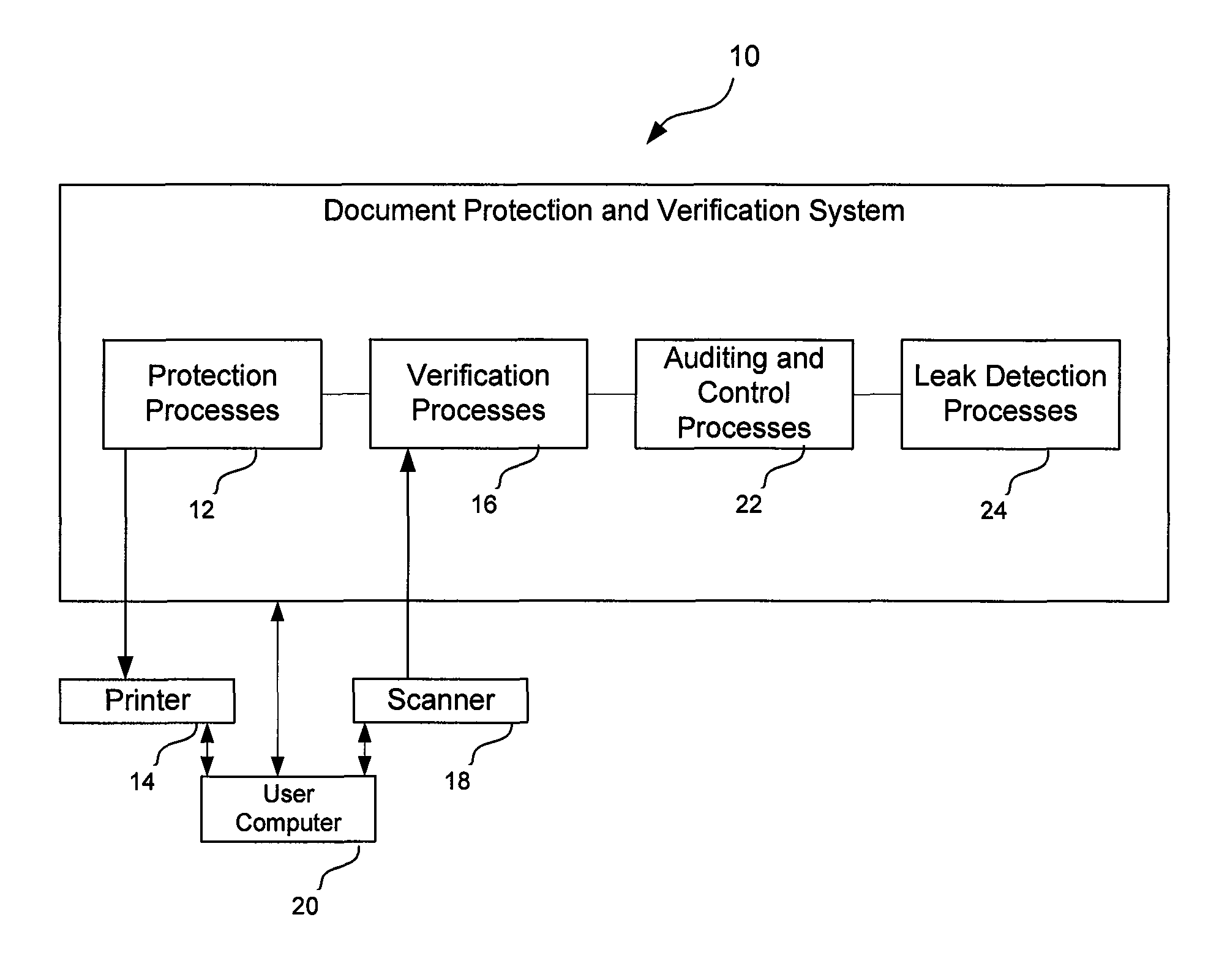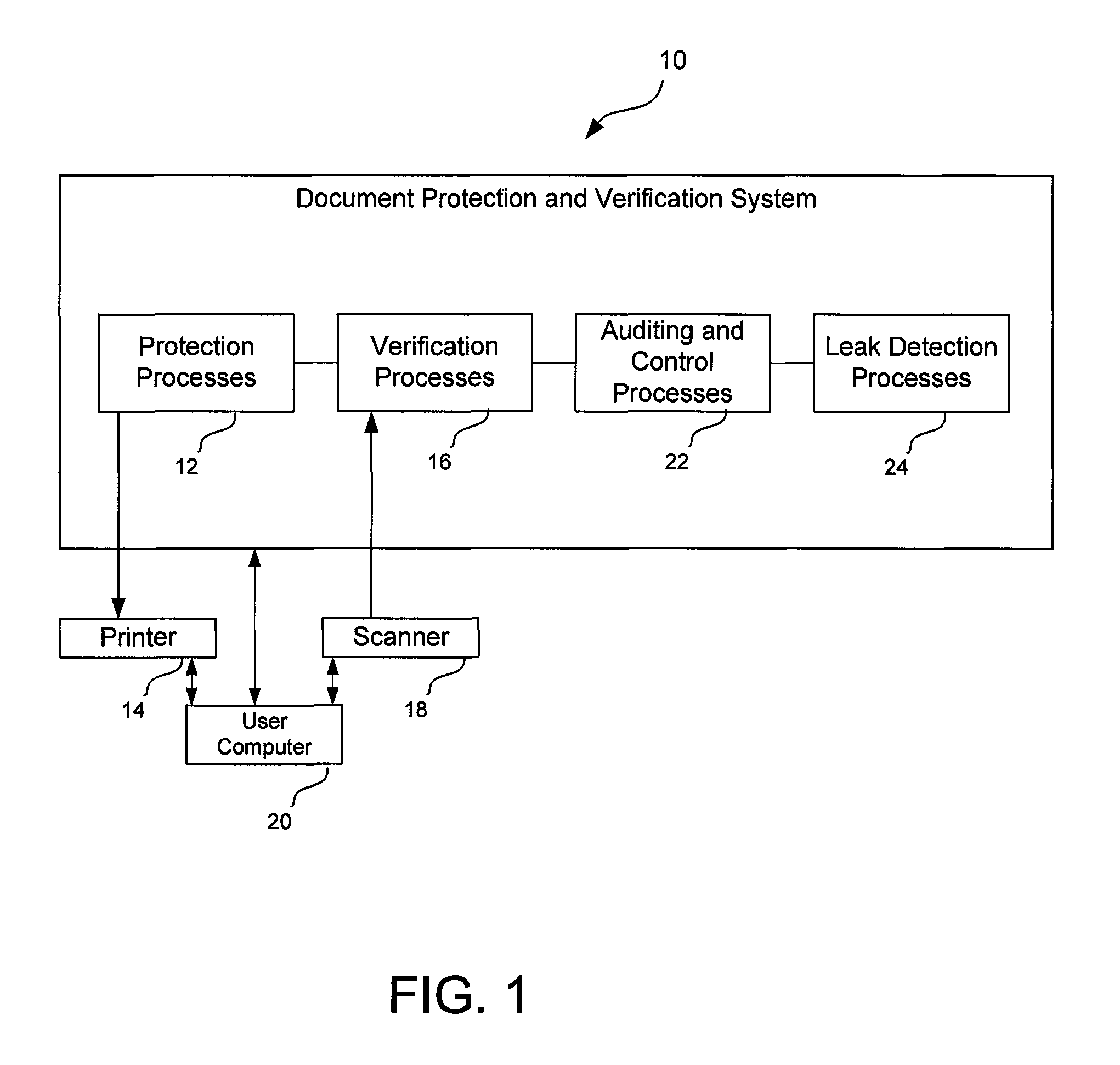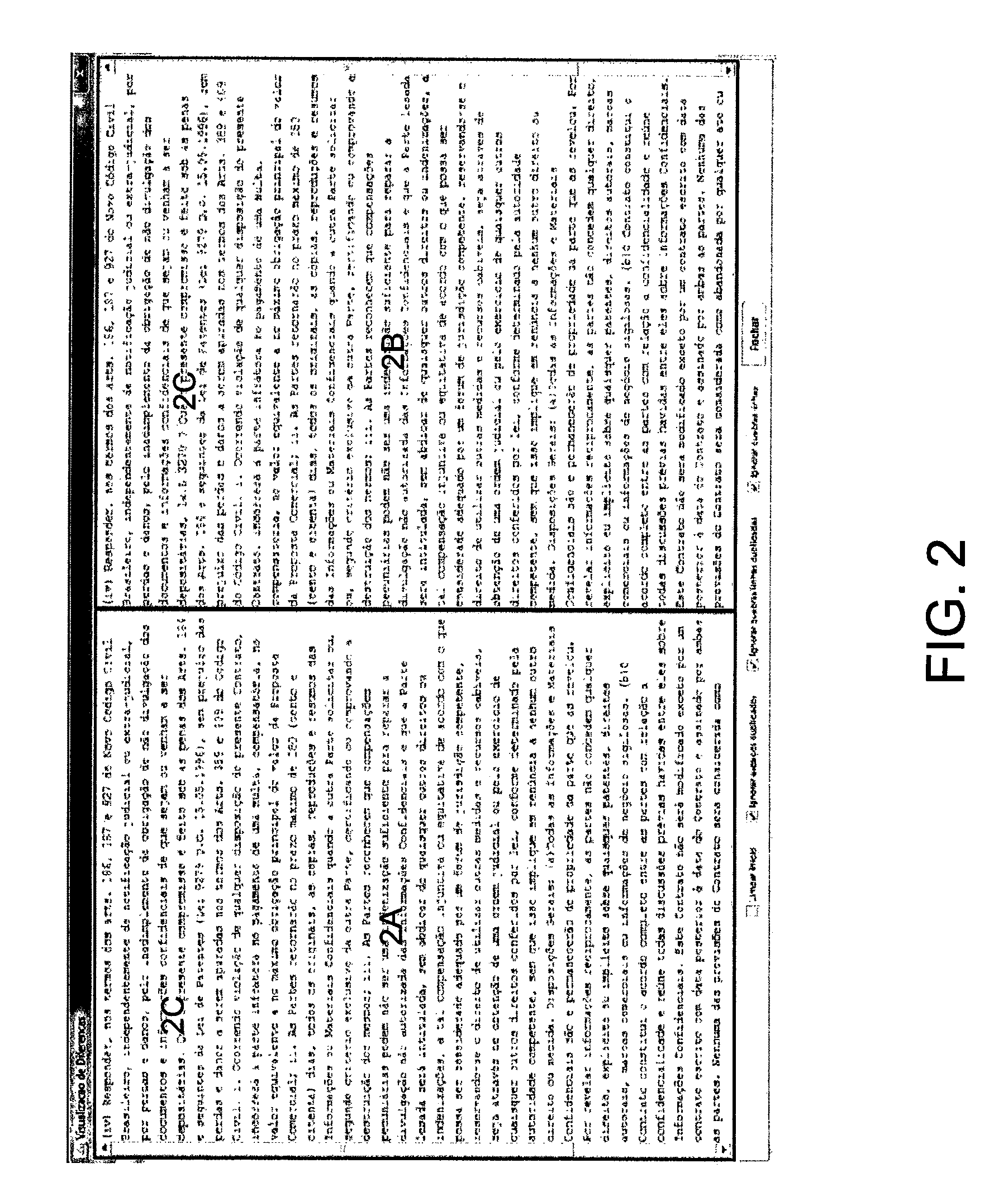Systems and processes of automatic verification and protection of paper documents against falsification, adulteration and leakage
a technology of automatic verification and paper documents, applied in the field of complete integrity of documents, can solve the problems of long lead time for generating and delivering such documents, inability to cover the different types of fraud with respect to the protection of documents printed in standard paper, and inability to combine documents
- Summary
- Abstract
- Description
- Claims
- Application Information
AI Technical Summary
Benefits of technology
Problems solved by technology
Method used
Image
Examples
Embodiment Construction
[0030]The present disclosure recognizes that currently there is no service, process or set of software in the market that encompasses a sufficiently robust set of functionalities and security technologies to obtain a high level of security and protection against document frauds. Such frauds may be inclusion, alteration or removal of a portion of a document, changing a portion of a document, falsifications, creating copies of a document, etc. The present disclosure also recognizes that it would be desirable to provide for the detection, along with an indication in the document identifying, originator, date, universal hour, alterations, inclusions, and elimination of any document content.
[0031]As discussed above, usage of discrete single technologies allows dynamic security to be applied to a document. However, as also discussed above, such technologies are stand alone features that apply to protect against one aspect of fraud of a document. Such technologies therefore have shortfalls...
PUM
 Login to View More
Login to View More Abstract
Description
Claims
Application Information
 Login to View More
Login to View More - R&D
- Intellectual Property
- Life Sciences
- Materials
- Tech Scout
- Unparalleled Data Quality
- Higher Quality Content
- 60% Fewer Hallucinations
Browse by: Latest US Patents, China's latest patents, Technical Efficacy Thesaurus, Application Domain, Technology Topic, Popular Technical Reports.
© 2025 PatSnap. All rights reserved.Legal|Privacy policy|Modern Slavery Act Transparency Statement|Sitemap|About US| Contact US: help@patsnap.com



